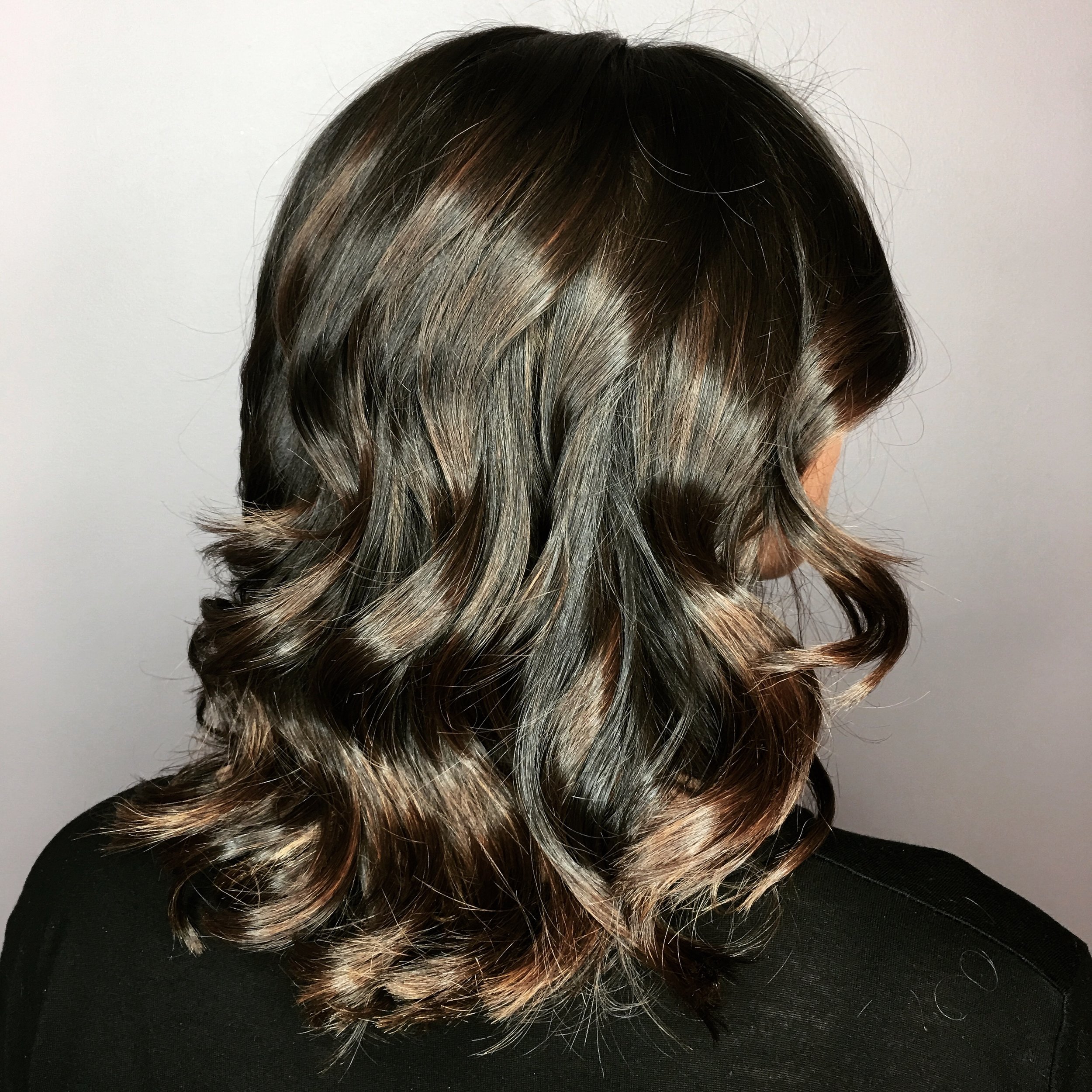BY LAURA BRAUNSTEIN
BRIEF HISTORY
Modern highlighting began in the early 1900s with the development of the cap with cutout method. A cap was placed on the head and strands of hair fed through holes in the cap. The cap separated out desired strands from the remainder of the hair and allowed for those pieces to be colored without affecting the protected hair. The main challenge with this method was that precision and consistency were often lacking. In the 1970s, balayage began as a technique in Paris. In its classic French form, strips of cotton were used to separate sections of hair painted with a bleach product that created lighter strands. The method allowed for the artist applying to have a visual for the first time of exactly how the hair colors would layer and where exactly they would fall. The downside to the method was that the liquidity of the lightener products created unwanted saturation and messiness that was hard to control for the majority of stylists. In response, the concept of foiling developed in New York in the late 1970s and become mainstream by the early 1980s. Instead of cotton being used to create separation by creating lift of the hair off of the scalp, aluminum foil would be used to create a packet so to speak that the selected strands could rest in with product applied. It had finally become possible to highlight hair in a very controlled fashion without product bleeding but with the ability to visualize and create evenness. So how and why has balayage made such a comeback you may ask?
LIGHTENER PRODUCTS TODAY
Hair color producers recognized that if there could be a way to control the consistency of lighteners rendering them to be more like a paste than a liquid, that free form hair painting, without messiness and unwanted bleeding, would be possible. They knew that this would be very appealing to professionals as artists. So the product companies pumped capital into development and figured out a way to mix a clay additive into the lightening products without making them volatile. This created a lightener with the consistency of old fashioned toothpaste, spreading in such a way so as to create almost no saturation nor bleeding. And voila all of a sudden about 4 years ago, balayage without cotton as a barrier, pegged as American balayage, was born.
BENEFITS AND DETRIMENTS
While I personally believe that a true master colorist can create the same outcome employing a wide variety of techniques including both balayage and foiling, here are a few reasons why modern balayage can really stand out. Because typically small panels of hair are painted with balayage vs. very thin bundles of hair with foils, a little bit goes a long way. It's easy with just a few pieces around the hairline and along the part line to create an entirely different look that has very minimal impact on the health and/or texture of the hair. Balayage is also very easy to strategically place as there is nothing impacting the visual of the hair's volume and position for the stylist applying. Next, generally speaking, the balayage route is actually pretty economical. While your appointments may be costly, the soft transitional color usually prevalent in balayage leaves you only having to touch up every 4 to 5 months. Finally, balayage highlights give the illusion of fullness because they add dimension to your overall color. And because hair lightener causes the surface of the hair shaft to expand in order to allow the formula to penetrate, highlights will actually increase the diameter of your hair, making it heftier overall. So what are the negatives? Despite vast consistency advancements having been made, balayage is still pretty hard to do well and it's not uncommon to get a botched job if you see someone who isn't very experienced. Additionally, the clay additive has a drying effect that prevents the lightener from being continuously progressive. What does this mean? Unlike more traditional lighteners, it can lift the hair to be 4 shades lighter, but generally cannot continue past that point. So if you have medium brown hair and want to be a cool light blonde, balayage is realistically only going to lift you to be a deeper warmer golden blonde. It's important to realize that most of the images that you see in magazines and on Instagram have had multiple sessions already where the pre-lightened hair gets lightened again in order to work towards a brighter look. As always though, the best thing to do is to consult with an experienced color master to determine the best methodology to achieve the desired results. Consultations in our salon are always complimentary!


